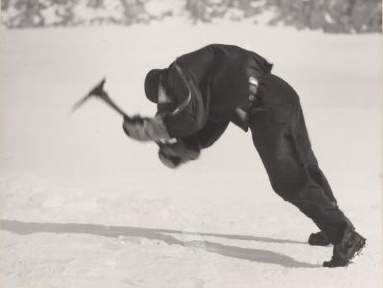ruelle
n. the space between a bed and the wall
Search Results for: in a word
In a Word
minimifidian
n. a person who has the least possible faith in something
In a Word
adaemonist
n. one who denies the existence of the devil
devilshine
n. demonic power or skill
Ronald Knox wrote, “It is stupid of modern civilization to have given up believing in the devil, when he is the only explanation of it.”
In a Word
epeolatry
n. the worship of words
A selection of adjectives, from Laurence Urdang’s Modifiers (1982):
abbatial, of an abbot
buccinal, of trumpets
cervine, of deer
compital, of a crossroads
contabescent, of atrophy
culicid, of mosquitoes
frumentaceous, of wheat
haruspical, of a soothsayer
macropodine, of kangaroos
natant, of swimming
obumbrant, of an overhang
orarian, of the seashore
pavonine, of peacocks
smaragdine, of emeralds
sphingine, of a sphinx
suspirious, of a sigh
trochilidine, of hummingbirds
tussal, of a cough
veliferous, of sails
“The word good has many meanings,” wrote Chesterton. “For example, if a man were to shoot his grandmother at a range of five hundred yards, I should call him a good shot, but not necessarily a good man.”
In a Word
periscii
n. the inhabitants of the polar circles: so called because in summer their shadows revolve around them
antiscians
n. people who live on the same meridian but on opposite sides of the equator, so that their shadows at noon fall in opposite directions
perioeci
n. people who live at the same latitude but on opposite meridians, so that noon for one is midnight for the other
In a Word
burgh-bote
n. a tax for the repair of fortresses
In a Word
undoctor
v. to make unlike a doctor, to degrade a doctor
In a Word
andabatarian
adj. struggling while blindfolded
In a Word

anemocracy
n. a government by the wind
Frank Hurley took the photo above during Douglas Mawson’s Australasian Antarctic Expedition of 1911. “The figure is actually leaning on a constant 100 miles per hour wind while picking ice for culinary purposes.”
In a Word
ambilevous
adj. “left-handed on both sides”; clumsy
